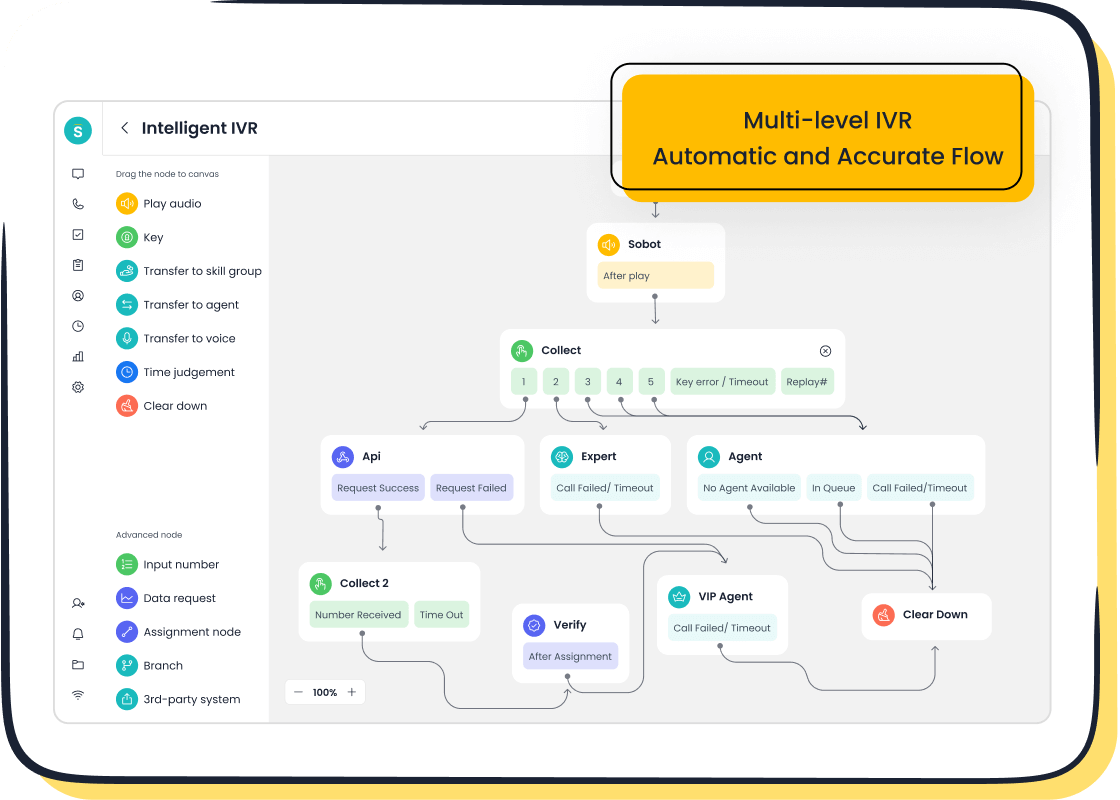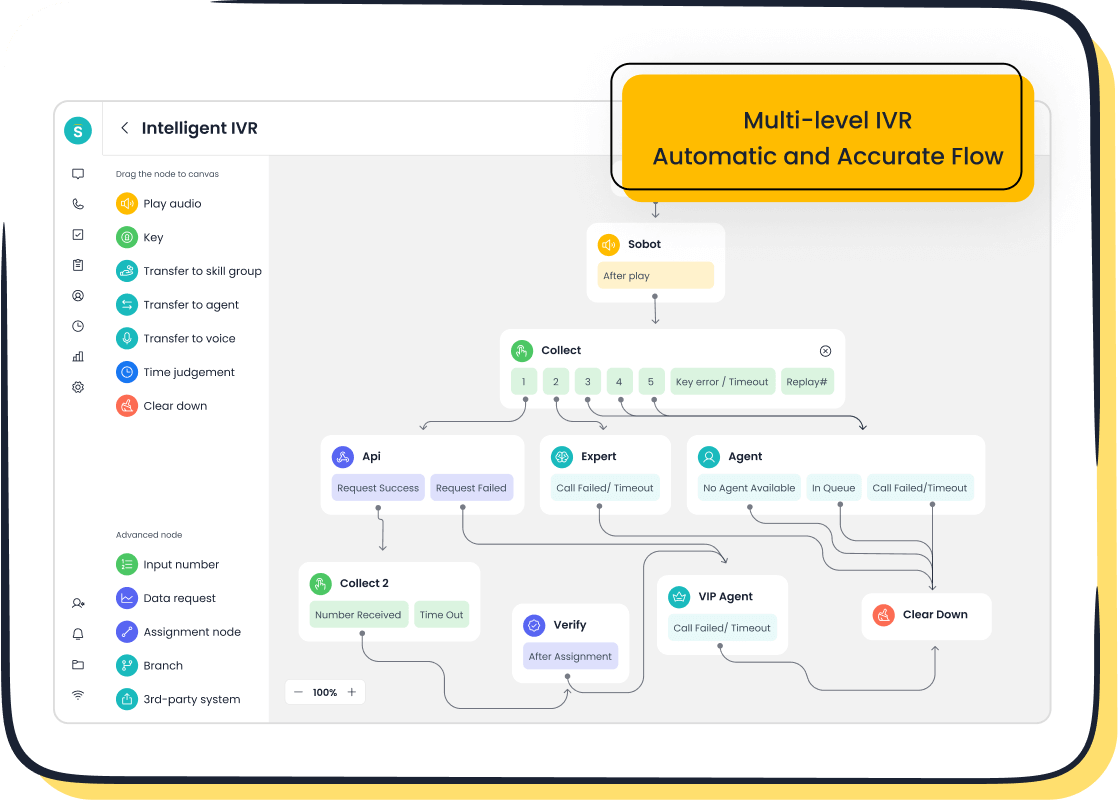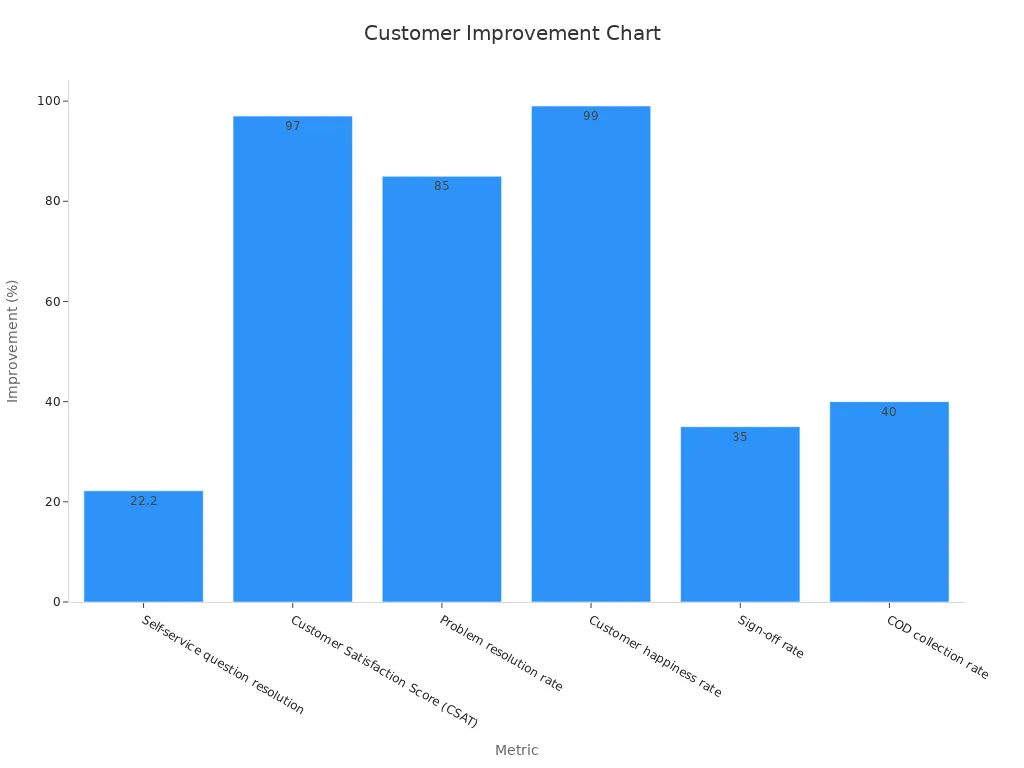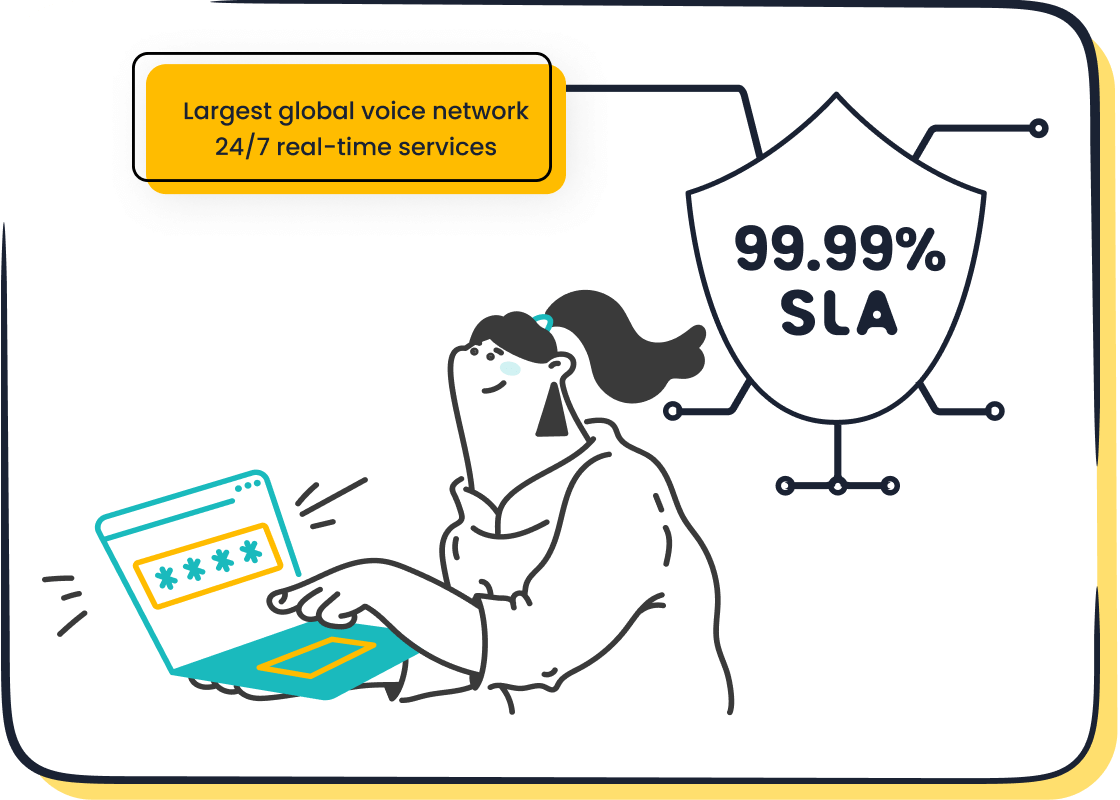Master Omnichannel Services for Retail Business Growth

Omnichannel strategies have revolutionized how you can grow your retail business and enhance customer satisfaction. By connecting multiple channels seamlessly, these strategies create a unified shopping experience. For instance, omnichannel customers shop 1.7 times more than single-channel shoppers, and purchase rates increase by 287%. Companies like Zara saw a 74% surge in online sales after adopting omnichannel services, proving their effectiveness.
To thrive in today’s competitive market, you must prioritize your customers’ needs. A customer-centric approach ensures consistent experiences across platforms, fostering loyalty and boosting retention by 89%. With solutions like Sobot’s omnichannel platform, you can unify interactions and deliver exceptional service, setting your business apart.
What Is Omnichannel and Why It’s Essential for Retail?
Defining Omnichannel in Retail
Omnichannel retailing integrates all customer touchpoints into a unified system. This approach ensures that customers enjoy a seamless experience across online and offline platforms. Historically, omnichannel retailing emerged in the mid-2000s when smartphones allowed consumers to compare prices and shop conveniently. Over time, it evolved into a strategic necessity, driven by technological advancements and changing customer expectations.
Omnichannel retailing connects various channels like websites, physical stores, social media, and mobile apps. For example, a customer might browse products online, purchase in-store, and later track their order through a mobile app. This integration creates a cohesive journey, making it easier for customers to interact with your brand.
| Evidence Type | Description |
|---|---|
| Definition | Omnichannel retailing integrates customer touchpoints into a unified system. |
| Historical Context | It began in the mid-2000s with the rise of smartphones. |
| Evolution | It has become essential due to technological progress and customer demands. |
Benefits of Omnichannel Services for Retail Businesses
Omnichannel services offer significant advantages for retail businesses. Companies with strong omnichannel strategies achieve an 89% customer retention rate, compared to just 33% for those with weak engagement. Additionally, businesses with effective omnichannel strategies experience 9.5% annual revenue growth, far surpassing the 3.4% growth of others.
These services also drive in-store visits. About 80% of customers who engage with omnichannel platforms visit physical stores. Moreover, omnichannel reporting ensures consistency across all channels, helping you retain and attract customers. By adopting omnichannel services, you can boost revenue, improve retention, and enhance operational efficiency.
- Key Benefits:
- Higher customer retention rates.
- Increased revenue growth.
- Improved consistency across channels.
How Omnichannel Improves Customer Experience
Omnichannel retailing enhances the customer experience by creating a seamless journey. For instance, Sephora integrates customer data across platforms to offer personalized recommendations. This approach builds loyalty and keeps customers engaged. Data-driven insights also allow you to understand customer behavior, optimize marketing efforts, and address issues effectively.
A seamless customer experience ensures that customers can interact with your brand effortlessly. Whether they shop online or in-store, they receive consistent service. Omnichannel strategies also enable businesses to adapt to today’s flexible shoppers, who expect convenience and personalization at every touchpoint.
By leveraging solutions like Sobot’s omnichannel platform, you can unify customer interactions and deliver exceptional service. Sobot’s tools, such as its AI-powered chatbots and unified workspace, streamline operations and improve customer satisfaction. These features help you create a cohesive and engaging experience for your customers.
Overcoming Challenges in Omnichannel Strategy Implementation
Addressing Siloed Data and Systems
Siloed data creates inefficiencies that hinder your omnichannel strategy. Employees often waste hours accessing fragmented data, leading to incomplete insights and lower confidence in decision-making. For example, siloed analytics tools make it difficult to track campaign performance across channels, resulting in wasted resources and inconsistent customer interactions.
To overcome this, you need interconnected technology solutions that consolidate data across all touchpoints. Unified platforms like Sobot’s omnichannel solution provide a centralized workspace, enabling seamless data integration. This approach ensures that your teams can collaborate effectively, share insights, and deliver consistent service. By using integrated systems, you can also improve data quality and streamline operations, enhancing your overall retail strategy.
Ensuring Consistent Customer Experiences Across Channels
Consistency is key to building trust and loyalty in retail. Studies show that 56% of customers prefer businesses offering omnichannel experiences, yet only 7% of companies meet this expectation. A lack of synchronization between channels often leads to fragmented experiences, frustrating customers and reducing satisfaction.
Centralized data systems play a crucial role in maintaining consistency. They allow agents to access complete customer histories, enabling personalized and accurate interactions. For instance, Sobot’s unified workspace ensures that when a customer transitions from one channel to another, their experience remains seamless. This not only enhances customer satisfaction but also strengthens your brand’s reputation.
Managing Resource and Technology Constraints
Implementing an omnichannel strategy requires significant resources and technological investment. Many businesses struggle to integrate systems, manage big data, and adapt to new business models. However, engaging customers across multiple channels can significantly increase purchase frequency, making the effort worthwhile.
To address these challenges, start by developing a clear strategy with defined goals. Tools like Sobot’s AI-powered solutions can help you automate repetitive tasks, reducing the burden on your team. Real-time system updates and analytics further optimize your operations, ensuring you deliver a superior customer experience. By investing in scalable and efficient technologies, you can overcome resource constraints and achieve long-term success.
Step-by-Step Guide to Building an Omnichannel Retail Strategy

Setting Clear Business Objectives
Establishing clear objectives is the foundation of a successful omnichannel retail strategy. Without defined goals, your business risks wasting resources and missing opportunities. Objectives help you measure progress and align your team’s efforts. For example, you might aim to improve customer retention, increase conversion rates, or optimize sales performance.
| Objective | Description |
|---|---|
| Understanding customer behavior | Gain insights into how customers interact across channels. |
| Measuring campaign effectiveness | Assess the success of marketing efforts across different platforms. |
| Optimizing sales performance | Improve sales strategies based on performance data. |
| Customer acquisition cost | Track the cost associated with acquiring new customers. |
| Conversion rates | Measure the percentage of visitors who complete a desired action. |
| Lifetime value | Estimate the total revenue expected from a customer over their relationship with the business. |
| Channel performance metrics | Evaluate the effectiveness of each channel in the omnichannel strategy. |
Strategic planning ensures your business stays focused. Tools like Sobot’s omnichannel solution provide real-time analytics to track these metrics, helping you refine your approach and achieve your goals.
Understanding Your Ideal Customer and Their Journey
To create an effective omnichannel retail strategy, you must understand your ideal customer and their journey. Start by identifying your target audience and their preferred platforms. Analyze existing customer journeys to pinpoint key touchpoints and pain points. For instance, a customer might discover your brand on social media, browse products on your website, and complete their purchase in-store.
| Component | Description |
|---|---|
| Unified Customer Data Management | Centralizes data from multiple channels for a comprehensive view, enabling personalized interactions and relevant content. |
| Customer Journey Mapping | Identifies key touchpoints and pain points, helping to streamline the customer experience across channels. |
| Reporting | Uses real-time analytics to track interactions and measure campaign effectiveness, informing strategic decisions. |
Customer journey mapping allows you to observe obstacles and streamline processes. Sobot’s unified workspace centralizes customer data, enabling you to deliver personalized experiences and address issues efficiently.
Selecting the Right Channels for Your Business
Choosing the right channels is critical for your omnichannel retail strategy. Each channel offers unique benefits and challenges. For example, social media increases visibility, while physical stores provide a tactile shopping experience. However, managing inventory across multiple channels can be complex.
-
Benefits of Multi-Channel Retailing:
- Increased revenue through visibility on multiple platforms.
- More purchasing options for customers, enhancing convenience.
- Ability to gather extensive data on customer preferences across channels.
-
Challenges of Multi-Channel Retailing:
- Difficulty in coordinating inventory across different sales channels.
- High costs associated with setting up and managing multiple channels.
Focus on channels that align with your business goals and customer preferences. Sobot’s omnichannel solution simplifies channel integration, ensuring consistency and efficiency across platforms.
Integrating Online and Offline Customer Experiences
Integrating online and offline experiences is essential for creating a seamless customer journey. Customers today expect to move effortlessly between digital and physical channels. For example, they might browse products on your website, check reviews on social media, and then visit your store to make a purchase. This unified approach ensures consistency and convenience, which are key to building loyalty.
Omnichannel strategies significantly enhance in-store visits. Businesses that adopt these strategies see an 80% higher rate of customers visiting their physical locations. This increase happens because customers feel more connected to brands that offer a cohesive experience across all touchpoints. By aligning your online and offline channels, you can create a customer journey that feels natural and intuitive.
To achieve this integration, you need tools that unify data and interactions. Sobot’s omnichannel solution provides a centralized platform where you can manage customer interactions across all channels. For instance, if a customer starts a conversation online and later visits your store, your team will have access to their history. This continuity improves the overall experience and ensures personalized service.
Additionally, consider offering features like “buy online, pick up in-store” or in-store kiosks for online browsing. These options bridge the gap between digital and physical spaces, enhancing the customer journey. By leveraging technology and aligning your channels, you can meet customer expectations and drive retail growth.
Training Teams for Omnichannel Excellence
Your team plays a crucial role in delivering a successful omnichannel experience. Without proper training, even the best strategies can fall short. Employees need to understand how to use tools, manage customer interactions, and maintain consistency across channels.
Start by educating your team about the importance of omnichannel retailing. Explain how it improves customer satisfaction and drives business growth. Provide hands-on training with tools like Sobot’s unified workspace, which simplifies managing interactions across platforms. This training ensures your team can handle customer inquiries efficiently, whether they occur online or in-store.
Role-playing exercises can also help. For example, simulate scenarios where a customer transitions from one channel to another. This practice prepares your team to deliver seamless service. Additionally, encourage collaboration between departments. When marketing, sales, and support teams work together, they can create a more cohesive customer journey.
Regular feedback and performance reviews are essential. Use analytics tools to track metrics like response times and customer satisfaction scores. Share these insights with your team to identify areas for improvement. By investing in training and fostering a culture of continuous learning, you can ensure your team excels in delivering an exceptional omnichannel experience.
Leveraging Technology and Data for Omnichannel Success
The Role of CRM and Analytics Tools in Streamlining Operations
CRM and analytics tools play a vital role in optimizing your retail operations. These tools help you collect, organize, and analyze customer data from multiple channels. By doing so, you can gain actionable insights into customer behavior and preferences. For example, CRM systems allow you to track interactions, enabling personalized communication and better service delivery. Analytics tools, on the other hand, help you measure the performance of your campaigns and identify areas for improvement.
Using these technologies ensures a unified experience for your customers. They allow you to maintain consistency across platforms, which is essential for building trust and loyalty. Sobot’s omnichannel solution integrates seamlessly with CRM systems, providing a centralized workspace for managing customer interactions. This integration simplifies operations and ensures that your team can focus on delivering exceptional service.
Using Sobot’s Omnichannel Solution to Unify Customer Interactions
Sobot’s omnichannel solution is designed to unify customer interactions across all touchpoints. It consolidates data from channels like social media, email, and voice into a single platform. This unified experience ensures that your customers receive consistent service, regardless of how they interact with your brand.
The platform’s AI-driven automation handles repetitive tasks, freeing up your team to focus on complex issues. Its unified workspace provides agents with a complete view of customer histories, enabling personalized and efficient service. Businesses using Sobot’s solution have reported a 30% increase in productivity and significant improvements in customer satisfaction. By adopting this solution, you can streamline your operations and enhance the overall customer experience.

Enhancing Customer Experience with Sobot’s Voice/Call Center
Sobot’s voice/call center offers advanced features that improve the customer experience. Its intelligent IVR system allows customers to resolve issues independently, reducing wait times. The platform also provides real-time monitoring and analytics, helping you track performance and identify areas for improvement.
The impact of Sobot’s voice/call center is evident in key metrics. For instance, self-service question resolution improved by 22.2%, while the customer satisfaction score reached 97%. The problem resolution rate increased to 85%, and the customer happiness rate hit an impressive 99%. These results demonstrate the platform’s ability to deliver a superior unified experience.

By leveraging Sobot’s voice/call center, you can enhance customer interactions and drive retail growth. Its features, such as AI-powered voicebots and global number availability, ensure that your business remains competitive in today’s market.
Examples of Successful Omnichannel Strategies

Case Study: Opay’s Transformation with Sobot’s Omnichannel Solution
Opay, a leading financial service platform, faced challenges in managing customer interactions across multiple channels. By implementing Sobot’s omnichannel solution, Opay transformed its operations and achieved remarkable results. The platform unified customer interactions across social media, email, and voice channels, enabling seamless communication and efficient service delivery.
The impact of this transformation is evident in the metrics below:
| Metric | Before Sobot | After Sobot | Improvement |
|---|---|---|---|
| Customer Satisfaction | 60% | 90% | +30% |
| Overall Cost Reduction | N/A | >20% | N/A |
| Conversion Rate | N/A | 17% | N/A |
Sobot’s intelligent IVR system allowed 60% of customers to resolve issues independently, reducing the workload on agents. Additionally, the WhatsApp Business integration achieved an 85% message reading rate, enhancing marketing outreach. This case study highlights how adopting an omnichannel strategy can significantly improve customer experience and operational efficiency.
Lessons from Industry Leaders in Retail
Industry leaders demonstrate the power of omnichannel strategies in driving measurable outcomes. Companies like Starbucks and Sephora have set benchmarks for success:
- Starbucks: Their loyalty program integrates seamlessly across mobile apps and in-store purchases, encouraging repeat visits and boosting sales.
- Sephora: By personalizing customer interactions, Sephora nurtured 11 million loyalty members who spend more than average users.
- Crate & Barrel: Their omnichannel approach, which allows customers to access shopping data across devices, resulted in a 10% revenue increase.
Other notable examples include:
| Company | Measurable Outcome |
|---|---|
| NA-KD | Increased customer lifetime value by 25%. |
| Slazenger | Achieved a 49x ROI in just eight weeks. |
| Vogacloset | Speeded up campaign launches and attained a 30x ROI. |
| Matahari | Bridged the gap between digital and in-store experiences for a 356x ROI. |
| Chow Sang Sang | Achieved a 23.5% uplift in conversion rates with onsite personalization and email recommendations. |

These examples prove that integrating technology and customer data can enhance retail performance and customer satisfaction.
Key Takeaways for Small and Medium-Sized Retailers
Small and medium-sized retailers can also benefit from omnichannel strategies. Here are some key takeaways:
- Companies with strong omnichannel engagement achieve an average customer retention rate of 89%, compared to 33% for those with weak engagement.
- Firms with effective omnichannel strategies experience 9.5% annual revenue growth, while others see only 3.4%.
- Small businesses using Shopify’s omnichannel solution report an 8.9% increase in annual sales.
To succeed, focus on understanding your customers’ preferences and integrating online and offline experiences. Tools like Sobot’s omnichannel solution can simplify this process by unifying customer interactions and providing actionable insights. By adopting these practices, you can enhance customer experience, boost retention, and drive growth in the competitive retail landscape.
Adopting omnichannel strategies is essential for driving retail growth and enhancing customer satisfaction. Businesses that embrace these strategies see significant benefits, such as an 80% increase in in-store visits and a 287% higher purchase rate from campaigns. Omnichannel customers also shop 1.7 times more than single-channel shoppers, proving its impact on customer experience. By leveraging tools like Sobot’s omnichannel solution, you can unify interactions, streamline operations, and deliver seamless service. Start your journey today to transform your retail operations and meet evolving customer expectations.
FAQ
What is the difference between multichannel and omnichannel retailing?
Multichannel retailing uses separate platforms for customer interactions, while omnichannel retailing integrates all channels into one seamless experience. For example, omnichannel allows customers to browse online, purchase in-store, and track orders via email, creating a unified journey. This approach improves customer satisfaction and retention.
Tip: Sobot’s omnichannel solution unifies customer interactions across platforms, ensuring a consistent experience.
How can small retailers implement an omnichannel strategy?
Start by identifying your customers’ preferred channels. Use tools like Sobot’s omnichannel platform to integrate these channels. Focus on creating a seamless online and offline experience. For example, offer “buy online, pick up in-store” options to bridge the gap between digital and physical shopping.
Why is customer data important in omnichannel retailing?
Customer data helps you understand behavior, preferences, and pain points. This insight allows you to personalize interactions and improve service. For instance, Sobot’s unified workspace centralizes customer data, enabling agents to provide tailored solutions and boost satisfaction.
How does Sobot’s voice/call center enhance customer experience?
Sobot’s voice/call center offers intelligent IVR, AI-powered voicebots, and real-time analytics. These features reduce wait times and improve issue resolution. For example, businesses using Sobot report a 22.2% improvement in self-service resolution rates, enhancing overall customer satisfaction.
What are the key benefits of adopting omnichannel strategies?
Omnichannel strategies increase customer retention by 89% and boost revenue growth by 9.5%. They also enhance customer experience by providing seamless interactions. Tools like Sobot’s omnichannel solution simplify implementation, helping you achieve these benefits efficiently.
Note: Learn more about Sobot’s omnichannel solutions here.
See Also
Comprehensive Overview of Omnichannel Call Center Solutions
Ten Essential Steps for Omnichannel Contact Center Setup
Excelling at Live Chat Within the Retail Sector
